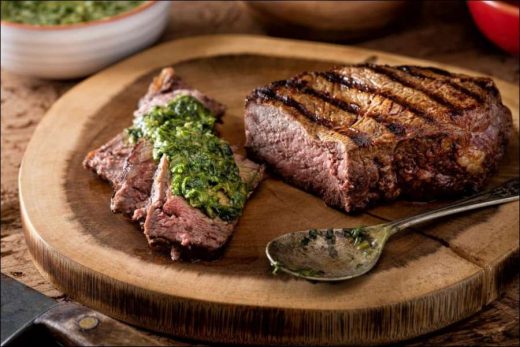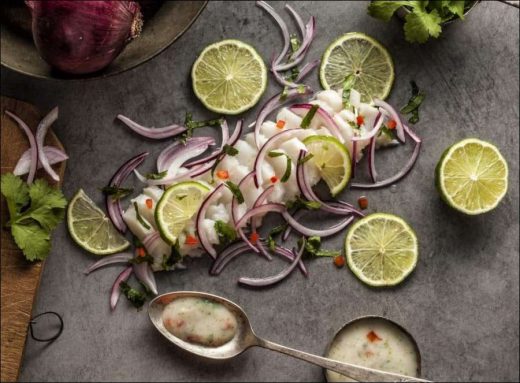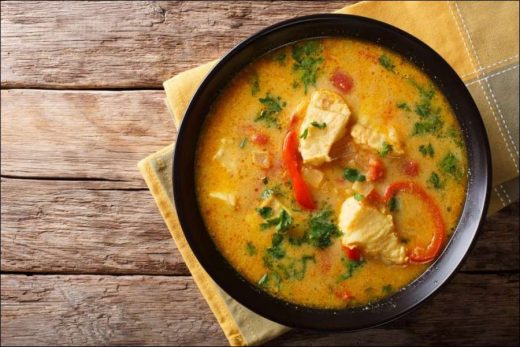South American cuisine. How about going on a unique journey of Latin American flavors in South America, the home of ancient civilizations? If you are ready for a unique taste tour, from thousands of years of food traditions to innovative street delicacies, we are traveling around the flavors of South America from country to country!

Argentinian Cuisine
When it comes to South American cuisine, one of the first places that comes to mind is undoubtedly Argentina. Along with tango and football, one of the things that best introduces Argentine culture to the world is the magnificent Argentine cuisine.
Argentina is the second largest country in the South American continent after Brazil. In addition, thanks to its proximity to sea level, it has very fertile plains. These fertile lands make Argentina the country that produces the most cattle in the world. Therefore, Argentinian food basically means amazing meat dishes. However, it would be a mistake to say that Argentinian cuisine is limited to this. It is rumored that before the arrival of Europeans, the natives of the continent grew pumpkins, melons and sweet potatoes. With the arrival of Europeans, this local cuisine was blended with Italian and Spanish flavors and cooking techniques. In this way, Argentinian cuisine with its delicious flavors emerges.
We said that meat has a special place in Argentine cuisine. Different names occur depending on the type of meat and cooking technique. Milanesa, churrasco, asado, parrillada are some of them. Empanada, a meat pastry found in most cuisines of South America, is also one of the important flavors of Argentine cuisine. Empanada, which is often served with a sauce called chimichurri, is a flavor that may differ in different countries of the continent, depending on the local products grown there. Additionally, you should definitely try locro and carbonada, which are cooked together with meat and vegetables.
Argentina’s street food is a unique part of Argentinian cuisine and South American street food. Choripan, which can be called a type of hot dog, chipa, which is especially eaten for breakfast, facturas, which is a type of bun, gebrannte mandeln, which is roasted sugared almonds, and alfajor, which is a traditional confection, should be on the list of street food enthusiasts.
If you go to Argentina and like meat dishes, you will definitely have an incredible experience.

Peruvian Cuisine
Ceviche is one of the most popular flavors of Peruvian cuisine.
Ceviche is one of the most popular flavors of Peruvian cuisine.
Let’s say in advance that Peruvian cuisine is a cuisine that will be talked about a lot in the future. It has already begun to be known as the “Gastronomic Capital” of South America. There is even a concept that defines innovative Peruvian cuisine: Novoandina.
Novoandina; It is a name given to the interpretation of traditional raw materials of Andean and Peruvian cuisine, such as herbs, spices, meats, vegetables and fruits, with modern techniques. This gastronomic trend is so special that it carries influences from Spanish cuisine, Chinese and Japanese cuisine, and African cuisine. And it does this using traditional ingredients. There is no doubt that it will be a trend we will hear about a lot in the future.
Potatoes have a great importance in Peruvian cuisine. Let us remind you that there are approximately 4 thousand different types of potatoes in Peruvian cuisine. Papa a la huancaina and causa are perfect for those who are curious about the potato flavors in Peruvian cuisine. For meat lovers, anticuchos and lomo saltado will be an interesting experience. Ceviche, made by marinating raw seafood, is one of the most popular dishes of Peruvian cuisine. Arroz chaufa is a rice dish in which you can see the Chinese style of Peruvian cuisine. For traditional drinks, we recommend you try chicha morada, made from purple corn, and emoliente, made by mixing many herbs. For those who enjoy street food, salchipapa is the most well-known street flavor of Peruvian cuisine.
If you are thinking of going to Peru to taste South American flavors, September will be a great choice. The Mistura Food Festival, which has become a phenomenon, is held every year at this time. From traditional products to experimental chefs, it’s a great opportunity to experience the diversity and amazing flavors of Peruvian cuisine.

Brazilian Cuisine
.
Brazil is the country with the largest area in South America. Therefore, Brazilian cuisine offers an extremely wide range of flavors, thanks to the presence of masses with different demographics in the coastal and inland regions and the diversity of products grown there.
Brazilian cuisine has developed as a fusion of traditional flavors with the flavors of Portuguese and African immigrants. Before the migrations, Brazilian traditional cuisine consisted of local delicacies that included combinations of flowers, fruits, root crops, and fish. With the arrival of the Portuguese to Brazil, European traditions such as dairy and leafy plants were added to the traditional cuisine. With the arrival of Africans, flavors that characterize African cuisine, such as coconut, palm oil and spices, laid the groundwork for the modern Brazilian cuisine.
If you like eating meat, churrascaria is the dish you should definitely try in Brazilian cuisine. Moqueca, a fish stew, is also one of the traditional flavors of Brazil. Feijoada, which is usually eaten with rice, is a type of black bean. Empanada, the characteristic pastry of South American cuisine, is one of the delicacies you should try in Brazil. Keep in mind that meat, fish and vegetable ingredients will vary depending on the region you go to. For those who want to try Brazilian street food, acaraje, a type of pastry, and coxinha, a stuffed meatball usually made using chicken, are among the most well-known flavors of Brazilian cuisine.
If you go to Brazil, keep in mind that Brazil is the world’s largest coffee producer and importer. We recommend you to try their delicious coffee and even visit their coffee farms.
Next Page: Chilean Cuisine, Colombian Cuisine, Venezuelan Cusine.
Views: 613










